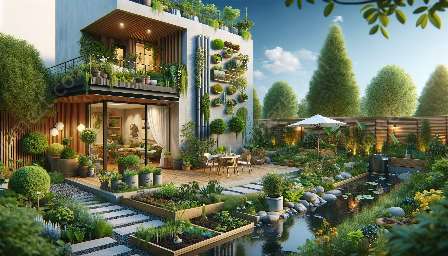Permaculture offers a holistic and sustainable approach to designing and maintaining living spaces, especially in arid regions. By integrating the principles of permaculture into yard and patio spaces, it is possible to create thriving and self-sustaining ecosystems that are regenerative and resource-efficient. In this comprehensive guide, we will explore how permaculture can be applied in arid regions, providing practical tips, innovative ideas, and real-world examples.
The Fundamentals of Permaculture
Permaculture is a design system that mimics natural ecosystems to create productive and regenerative environments. It emphasizes the sustainable use of resources, ethical principles, and the integration of natural elements to foster a harmonious relationship between humans and the environment. When applied in arid regions, permaculture becomes a powerful tool for mitigating desertification, conserving water, and promoting biodiversity.
Designing with Permaculture in Arid Regions
Designing yard and patio spaces using permaculture principles in arid regions requires a deep understanding of the local climate, soil, and vegetation. By incorporating water-efficient landscaping, drought-resistant plants, and innovative irrigation techniques, it is possible to create resilient and beautiful outdoor areas. This approach not only conserves water but also reduces the need for chemical inputs, thus minimizing the impact on the environment.
Arid-Adapted Plant Selection
Choosing the right plants for permaculture in arid regions is crucial for the success of the design. Native and drought-tolerant species thrive in these harsh conditions and contribute to the overall resilience of the ecosystem. Additionally, integrating food-bearing plants, medicinal herbs, and nitrogen-fixing species can enhance the productivity and ecological balance of the space, turning it into a functional and diverse environment.
Building Resilient Soil
Soil health is at the heart of permaculture, and in arid regions, it becomes even more critical. Implementing strategies such as mulching, composting, and soil-building techniques fosters the development of fertile and moisture-retentive soils, providing a solid foundation for plant growth and ecosystem stability. By enhancing the soil's capacity to store and release water, permaculture practitioners can significantly improve the overall resilience of their yard and patio spaces.
Harvesting Water in Arid Environments
Collecting and storing water is a central aspect of permaculture, especially in arid regions where water scarcity is a significant challenge. Utilizing rainwater harvesting, earthworks, and passive water storage systems enables the efficient capture and utilization of precious water resources. Integrating these techniques into the design of yard and patio spaces supports the establishment of lush and productive landscapes while reducing reliance on external water sources.
Regenerative Practices and Maintenance
Permaculture in arid regions flourishes through regenerative practices that promote ecological diversity and resilience. Implementing rotational grazing, natural pest control, and sustainable land management techniques nurtures the development of self-sustaining ecosystems. Additionally, fostering habitat for beneficial wildlife and pollinators contributes to the overall health and balance of the environment, creating a dynamic and thriving living space.
Real-Life Examples and Inspirational Projects
Exploring real-life permaculture projects and success stories in arid regions provides valuable insights and inspiration for creating your own sustainable yard and patio spaces. By studying innovative design solutions, community initiatives, and resilience-building strategies, individuals can gain practical knowledge and envision the transformative potential of permaculture in challenging environments.
Conclusion
Permaculture in arid regions presents an opportunity to transform landscapes and living spaces into resilient and regenerative environments. By applying the principles of permaculture to yard and patio areas, individuals can make significant contributions to mitigating desertification, conserving water, and fostering biodiversity. It is a dynamic and inspiring journey that invites creativity, innovation, and a deep connection to the natural world.


